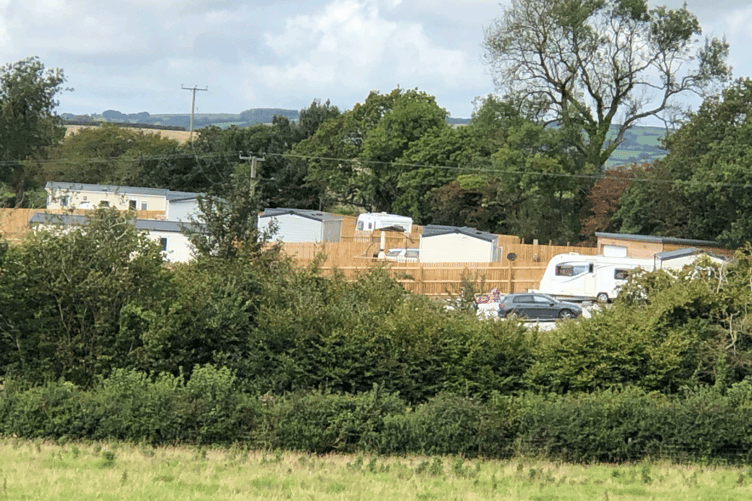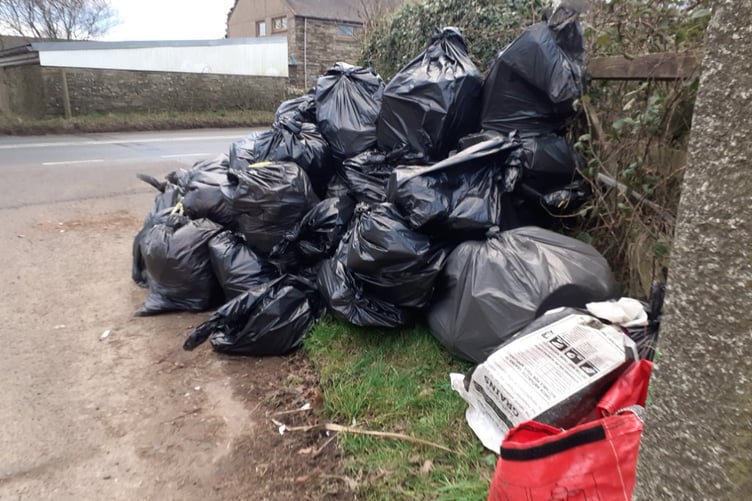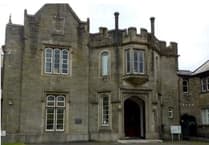EACH week, hundreds of planning applications come before Cornwall Council’s planning department, seeking to win approval for various plans right across the Duchy.
These plans can comprise of a number of different reasonings– ranging from permission to replace windows or listed building consent ranging up to large house building developments or changing of use of a building, for instance, from an office to a café, or flats.
Within this large and often complex system, there are a number of formats from which planning advice and approval can be sought.
These range from full applications where all the details which comprise a proposed development or work to a building are submitted, to outline applications, where further details are yet to be confirmed, for example, an outline application with reserved matters for appearance may not confirm the final proposed development but rather seek permission in principle.
An example of this is one for an outline permission for 20 dwellings on land with reserved matters for appearance and scale; the reserved matters would require further permission later for their inclusion.
Other types of applications include pre-application advice requests, where would-be developers submit often outline proposals to a local authority to ascertain whether it is likely to gain support or not prior to submitting a planning application.
The vast majority of applications are decided by planning officers employed by a local authority under ‘delegated powers’, meaning they do so on behalf of their employer, however, some applications are ‘called in’ by local councillors to be discussed at an area’s strategic planning committee meeting, meaning the final decision rests with a committee of councillors.
Continued use of gypsy camp refused

PA23/09811: Plans for the continued use of the land as a private gypsy site consisting of five pitches including five mobile homes, five touring caravans, five utility buildings and associated works on land near Liskeard has been refused by Cornwall Council.
The application was made by Mr S Ayres and concerned Land To The East Of Trago Farm, East Taphouse, Liskeard and had been refused by the planning committee contrary to the recommendation for approval by planning officers.
In their application, the applicants told the local authority: “This statement is submitted in support of a detailed planning application for the continued use of the land as a private gypsy site consisting of five pitches including five mobile homes, five touring caravans, five utility buildings and associated works.
“Those associated works relate to the installation of separate septic tanks serving each pitch, additional landscaping and the construction of a section of a Cornish Hedge adjacent to the entrance to the site.
“By way of background, in August a retrospective planning application was submitted to the Council, under application reference PA23/06486.
“In their determination of that application the Council considered that the pitch and associated development in the most northern portion of the site, adjacent to the section of the Listed Hedge, would result in an adverse impact upon the section of Listed Hedge. As a result, the Applicants have submitted this scheme, which removes all development for this portion of the site.
“Whilst the site is located in the countryside, it is not located in an isolated location. Neither the National Planning Policy Framework (NPPF), the government’s Planning Policy for Traveller Sites (PPTS) and Policy 11 of the Cornwall Local Plan prohibit Gypsy and Traveller sites from being located in the countryside. Consequently, there is no basis in local or national planning policy to consider that the continued use of the site as a private Gypsy Site is unacceptable in principle.
“The Applicant and their family, who are all Romani Gypsies, live on the site. The Applicant and their family moved onto the site earlier on this year since they were unable to find any pitches to accommodate them at the existing Gypsy site at St Ive Road, Pensilva.
“The Applicants have long standing and historic ties with the gypsy community in the area. As has been mentioned, the site is occupied by members of the Applicant’s family, all of which are Romani gypsies.”
However, the plans were met by objections from nearby residents, who claimed that the site was unsympathetic with the landscape and had led to issues including overflows of rubbish.
St Pinnock Parish Council also stated a vociferous opposition, stating to the council in its view: “The proposal entails the change of use of the land from agricultural to residential. As the touring caravans are used as living accommodation, this application should be viewed as for ten units of living accommodation ' which is significant over development of the site.
“The site is within an area of Area of Great Landscape Value (AGLV) and is close to an isolated Grade II listed farmhouse (Trago Farm) and the Grade II Listed Stone Hedge 150 metres east of Trago Farm (NHLE No.1329300). The development is profoundly incongruous and therefore significantly harms the character of the area. It is clearly visible not only from the nearest properties, but also a substantial number of properties on the north and eastern sides of East Taphouse.
“The site does not form part of an otherwise continuous built-up frontage and therefore would not represent an infill.
The plot cannot be considered suitable for rounding-off of previously developed land adjoining a settlement. It is significantly outside of the delineated extent of East Taphouse and is substantially detached from it and development on the site would certainly visually extend the built form well into the countryside and any dwellings would appear as isolated and incongruous.
“The application site apparently measures some 4,418 square metres (2.96 acres), upon which are being sited five foul sewage drains from the mobile homes into septic tanks ' one serving each pitch with an estimated total throughput of 3000 litres per day. In addition, run-off rainwater from the development is disposed of into on-site soakaways. Drains are provided down the length of the access drive, to ensure that run-off water will remain on-site and not drain into the lane serving the site and the dwellings located to the west.
“This is a considerable amount of foul and surface water being disposed of by soaking away on the site which could lead to substantial waterlogging which could have a detrimental impact on the health and wellbeing of any travellers that may locate there.
“It is understood that water is provided to a nearby property by a borehole. There is a risk that this might be contaminated by this abundance of foul water. Contrary to the applicant's assertions, the proposed development is not 'adjacent to a range of other houses' and it will not only dominate the local settled community, but it will also overwhelm it.
“It is understood that vehicular access to the site is wholly over private roads. It is of concern that the additional use of them by vehicles attendant upon this site could lead to its premature degradation.
“It is understood that the applicant and their family were resident at the Gypsy site at St Ive Road, Pensilva and voluntarily left it to establish this site. The application makes no mention of what business activities (if any) may be carried on at the site.
Refusing the application, Cornwall Council’s planning committee said: “The proposed development as a result of the scale of the proposal would dominate the nearby settled community and the location detached from nearby services and facilities, would mean that occupants would be wholly reliant on private transport to meet their day-to-day needs. The proposal would represent an unsustainable location for the proposed development, contrary to Policies 1 and 11.1 and 11.3 of the Cornwall Local Plan Strategic Policies 2010-2030.
“The proposal, by reason of the unsympathetic form of the development creates a jarring impact with the pleasant and characteristic countryside setting.”


.jpeg?width=209&height=140&crop=209:145,smart&quality=75)


Comments
This article has no comments yet. Be the first to leave a comment.